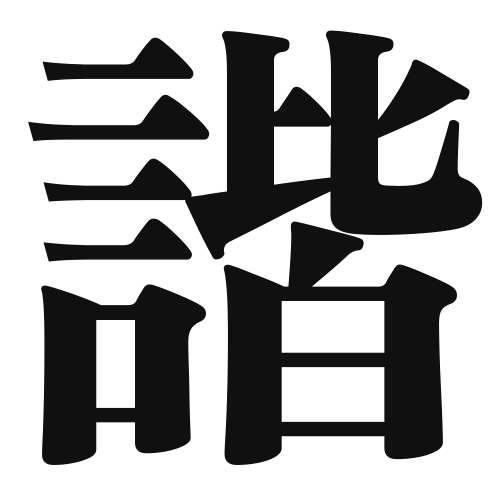1. Overview of Meaning
The kanji “諧” (kai) generally means “harmony” or “agreement.” It conveys a sense of balance and compatibility, often used in contexts related to music, relationships, and social interactions.
2. Formation and Radical
Formation of the Kanji: The kanji “諧” is a compound character (会意文字) that combines elements to convey its meaning. It consists of the radical for “speech” (言) and the character “皆” (meaning “all” or “everyone”), suggesting a harmonious communication among all.
Radical: The radical of “諧” is 言 (gen), which relates to speech or language, emphasizing the importance of communication in achieving harmony.
3. Examples of Usage
Common Words and Phrases: Some frequently used words that include “諧” are “諧調” (kaichou – harmony in music) and “諧和” (kaiwa – harmonious relationship).
Example Sentences in Daily Conversation:
- 音楽の諧調がとても美しいです。 (The harmony in the music is very beautiful.)
- 彼らは諧和な関係を築いています。 (They are building a harmonious relationship.)
4. Synonyms and Antonyms
Similar Kanji: A similar kanji is “和” (wa), which also means “harmony” but is often used in a broader cultural context, such as in “和食” (washoku – Japanese cuisine). The difference lies in the nuance, where “諧” emphasizes communication and agreement.
Antonyms: An antonym of “諧” is “争” (sou), which means “conflict” or “dispute,” representing the opposite of harmony.
5. Cultural and Historical Background
Relation to Japanese Culture: The concept of “諧” is deeply rooted in Japanese culture, where harmony is valued in social interactions and community life. It reflects the importance of maintaining peaceful relationships.
Proverbs and Idioms: One relevant proverb is “和を以て貴しと為す” (Wa wo motte toshi to nasu), which translates to “Harmony is to be valued,” highlighting the significance of harmony in Japanese society.
